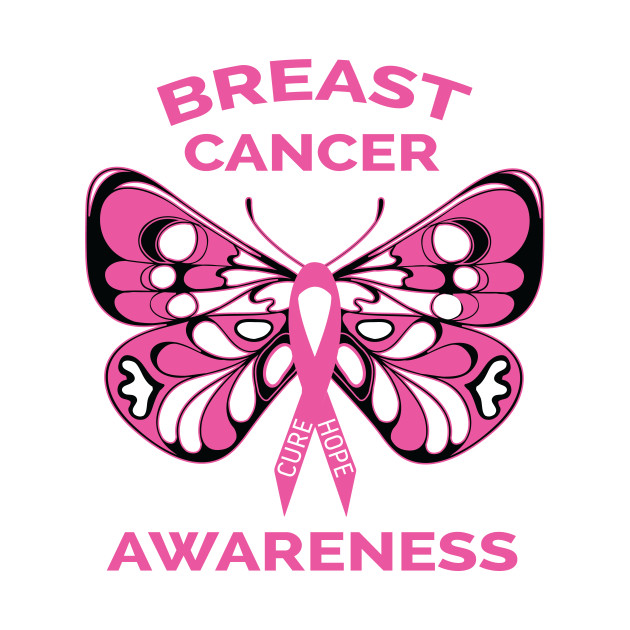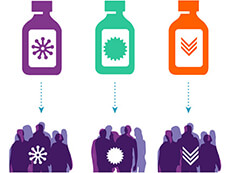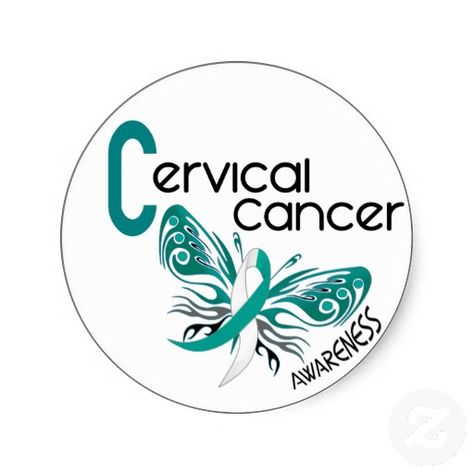Prevention
Cervical cancer can often be prevented by having regular screenings to find any precancers and treat them. Preventing precancers means controlling possible risk factors, such as:
-
Delaying first sexual intercourse until the late teens or older
-
Limiting the number of sex partners
-
Avoiding sexual intercourse with people who have had many partners
-
Avoiding sexual intercourse with people who are obviously infected with genital warts or show other symptoms
-
Quitting smoking
The HPV vaccine helps prevent cervical cancer caused by HPV. Gardasil 9 is available in the United States for preventing infection from HPV-16, HPV-18, and 5 other types of HPV linked with cancer. There were 2 other vaccines previously available in the United States: Cervarix and the original Gardasil. Both of these are no longer available in the United States. However, these vaccines may be in use outside of the United States.
Screening is used to look for cancer or abnormalities that may become cancerous before you have any symptoms or signs. Scientists have developed, and continue to develop, tests that can be used to screen a person for specific types of cancer before signs or symptoms appear. The overall goals of cancer screening are to:
-
Reduce the number of people who die from the cancer, or completely eliminate deaths from cancer
-
Reduce the number of people who develop the cancer
Screening information for cervical cancer
The following tests and procedures may be used to screen for cervical cancer:
-
Bimanual pelvic exam. In this examination, the doctor will check a woman’s body for any unusual changes in her cervix, uterus, vagina, ovaries, and other nearby organs. To start, the doctor will look for any changes to the woman’s vulva outside the body and then, using an instrument called a speculum to keep the vaginal walls open, the doctor will look inside the woman’s body. Some of the nearby organs are not visible during this exam, so the doctor will then insert 2 fingers of 1 hand inside the patient’s vagina while the other hand gently presses on the lower abdomen to feel the uterus and ovaries. This exam typically takes a few minutes and is done in an examination room at the doctor’s office.
-
HPV test. This test is done on a sample of cells removed from the woman’s cervix, the same sample used for the Pap test (see below). This sample is tested for the strains of HPV most commonly linked to cervical cancer. HPV testing may be done by itself or combined with a Pap test. This test may also be done on a sample of cells collected from a woman’s vagina, which she can collect herself.
-
Pap test. The Pap test has been the most common test for early changes in cells that can lead to cervical cancer. This test is also called a Pap smear. A Pap test involves gathering a sample of cells from the cervix. It is often done at the same time as a bimanual pelvic exam. A Pap test may be combined with an HPV test.
-
Visual inspection with acetic acid (VIA). VIA is a screening test that can be done with few tools and the naked eye. During VIA, a dilution of white vinegar is applied to the cervix. The health care provider then looks for abnormalities on the cervix, which will turn white when exposed to vinegar. This screening test is very useful in places where access to medical care is limited.
Screening recommendations for cervical cancer
Different organizations have looked at the scientific evidence, risks, and benefits of cervical cancer screening. These groups have developed different screening recommendations for women in the United States who have “average risk” of cervical cancer, meaning these women do not have strong risk factors for this disease.
ASCO recommends that all women receive at least 1 HPV test to screen for cervical cancer in their lifetime. Ideally, women 25 to 65 years old should receive screening with the HPV test every 5 years. Women 65 and older may stop screening if their HPV test results have been mostly negative over the previous 15 years. Sometimes, women who are 65 and older and who have tested positive for HPV may continue screening until they are 70.
Decisions about screening for cervical cancer are becoming increasingly individualized. Sometimes, screening may differ from the recommendations discussed above because of a variety of factors. Such factors include the availability of testing and follow-up options in your area, your personal risk factors, and your health history. It’s important to talk with your health care team or a health care professional knowledgeable in cervical cancer screening about how often you should receive screening and which tests are most appropriate.
Here are some questions to ask a health care professional:
-
At what age should I start being screened for cervical cancer?
-
Should my screening include an HPV test? If so, how often?
-
Why are you recommending these specific tests and screening schedule for me?
-
At what age could I stop being regularly screened for cervical cancer?
-
Do any of these recommendations change if I have had cervical dysplasia or precancer?
-
Do any of recommendations change if I have HIV?
-
Do any of these recommendations change if I have had a hysterectomy?
-
Do any of recommendations change if I am pregnant?
-
Do any of recommendations change if I have had the HPV vaccine?
-
What happens if the screening shows positive or abnormal results?
All women should talk with their doctors about cervical cancer and decide on an appropriate screening schedule. For women at high risk for developing cervical cancer, screening is recommended at an earlier age and more often than for women who have an average risk of cervical cancer.












